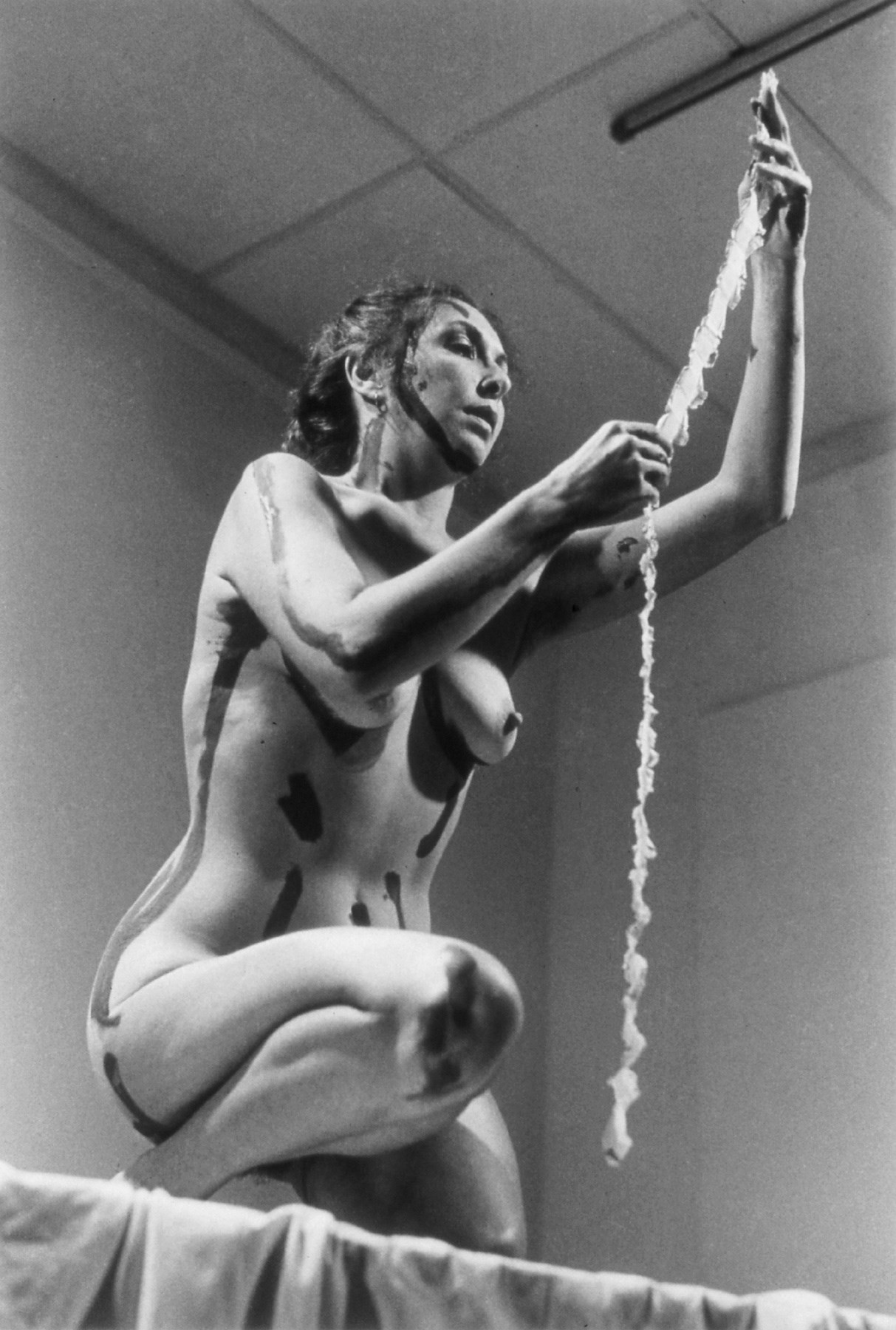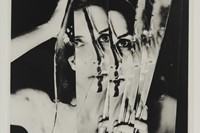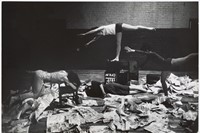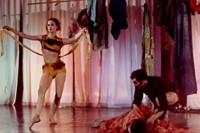Anchoring Body Politics – the Barbican’s joyful retrospective of the late artist Carolee Schneemann (and the first in the UK) – is the body of Carolee Schneemann herself. Across a selection of seminal works, we see the American artist variously writhing in paint and raw meat; having sex with her lover, James Tenney; unfurling a long scroll from her vagina, and swooping naked from a harness to paint a stage set. Schneemann’s radical, far-reaching work was both full-bodied and fully embodied. An empty harness flanked by screens playing footage of Up to and Including Her Limits from the 1970s – her lithe and playful take on abstract expressionism – marks both her presence, and its loss. (Schneemann died in 2019, two years after winning the Golden Lion for Lifetime Achievement in Venice.)
Schneemann’s influence is vast, and continues to be felt across art and film. Arguably, her work is what first comes to mind when we think of body art. (Scenes of body art in Peter Strickland’s upcoming film Flux Gourmet surely owe a debt to her, as do scores of other artworks.) In celebration of her life and legacy, AnOther asked the artist Sands Murray-Wassink, writers Lauren Elkin and Philippa Snow, and editor and creative consultant Isabella Burley to share their experiences of Schneemann and her vital work.
Isabella Burley, Chief Marketing Officer of Acne and Founder of Climax Books
“I remember seeing Meat Joy (1964) as a teenager and it completely blew my mind. Then, when I did an art foundation (for a few months), I slowly became more and more interested in Carolee’s work and the ephemera surrounding it – old invitations, bits of writing and photographs. It was always so assertive, in-your-face, elegant and supremely beautiful. How she used language and image, body and form.
“Then, in 2017, I was lucky enough to meet her as part of an Artist Series project I was curating at Helmut Lang which featured other artists such as Carrie Mae Weems, Walter Pfeiffer and Leigh Ledare. In person, she had a wicked sense of humour, and was incredibly kind and curious. Back in New York, I remember presenting her series Infinity Kisses to the team, and freaking everyone out! It’s basically her making out with her cat every morning, a piece she worked on for several years. As part of the Barbican exhibition, I will be partnering with them through my bookstore Climax Books for a special Carolee Schneemann project launching in November. Stay tuned!”
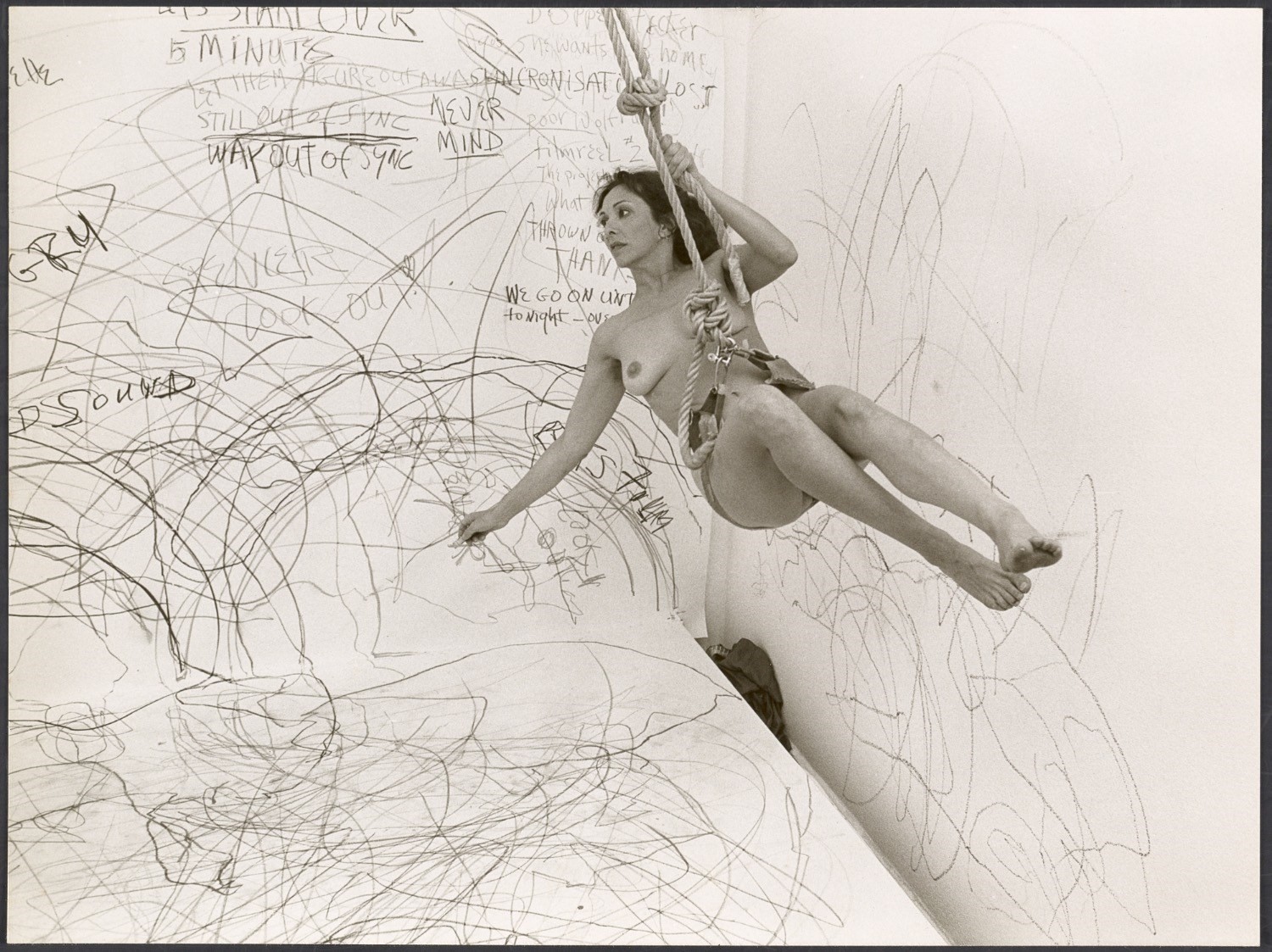
Philippa Snow, Writer and Author of Which as You Know Means Violence
“Ordinarily it would feel like a betrayal to focus on the beauty of a female artist; I think, though, that Carolee Schneemann’s appearance was so much a part of the effectiveness of some of her best work that it would be remiss of me not to refer to it. She was a master at using all of the attributes that made her an ideal subject for the mainstream, patriarchal gaze – her breasts, her whiteness, her slenderness, that Liz Taylor face – to attract the attention of her audience, and then doing something startling, bluntly primal, so that nobody could look away for an entirely different reason. No wonder male audience members, as they sometimes did, expressed anger or approached her violently: she made fools of those who dared to see her as a naked bauble by reminding them that even hot girls bled, got angry, were artistic geniuses, had freaky libidos, were essentially made of meat, and occasionally took pleasure in being gleefully unhinged. She was also brilliant at balancing joy and rage, pleasure and repulsion, and if she hit out at the constraints and indignities visited on her by dint of her being female, she never once seemed annoyed or disappointed by the fact of occupying a woman’s body.
“I invoked her only once in Which as You Know Means Violence, the book-length-essay I wrote about self-injury in art and entertainment, but when I did, it was to relay something she had told me when I interviewed her in 2015: that ‘[female] performance has these [historical] connections with and traditions in cultural pleasure, for the male gaze and a male audience. It’s the tradition of the dancer, the striptease, the beautiful actress.’ The idea that this lineage of patriarchal objectification could be helpful rather than a limitation – could be something to pervert, to kick against, or to use for shock value – helped to quietly inform pretty much everything I wrote about performance art vis-à-vis gender in the book. Of course, if the bodies of beautiful women are seen as currency, it makes sense that using them to do fucked-up or unexpected things would make for a transgressive spectacle, like the KLF burning all that filthy cash.”
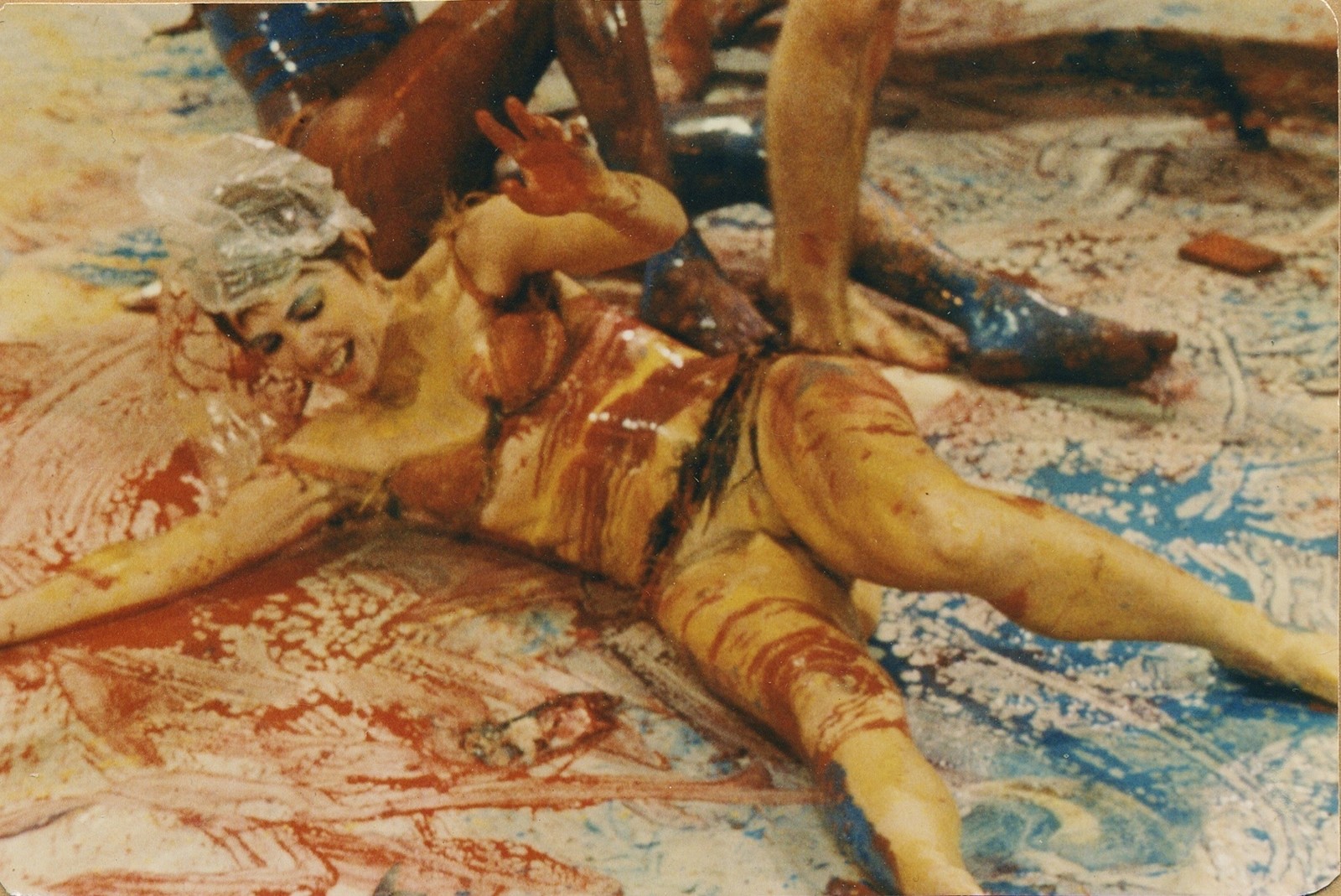
Sands Murray-Wassink, Painter, Body Artist and Writer
“I am a painter, body artist, writer and perfume collector based in Amsterdam since 1994. Carolee Schneemann was my teacher in a sculpture class at Pratt Institute in Brooklyn in 1994, beginning a relationship that would last 25 years. Carolee was, for me, always a voice of reason in the contemporary art world and I measured and measure all artwork against her work and intellect. She will never get enough credit for the way – if you pay close attention – the very principles of what art can be can be altered by studying her multifaceted work. Her painting altered the global atmosphere.
“The genital connected us. She used to say when analysing politics, ‘Is this good for vulva? and I adapted that to ‘is this good for anus?’ She was a painter like no other, taking visual principles off of the canvas and moving them into real time and space. I attempt to extend this by seeing thoughts, feelings, emotions, relationships and behaviour as my main art materials. Everything visual is an energy trace.
“Being bipolar and hospitalised for depression, she encouraged me to get a cat and to try to see the world with wonder through the cat’s eyes. It worked. She was always deeply grounded, even though she spoke about the body as a force field and had connections to the paranormal. Whatever I write about her will never be enough.
“I miss her every day and will work further on extending the principles she taught me in courage for the rest of my days. Things like: always to lean into the difficulty, dissonance, and fracture of life. Most of what we had was deeply personal and felt familial even, as though she was an older sister. The one I never had but always wanted to follow in the footsteps of.”
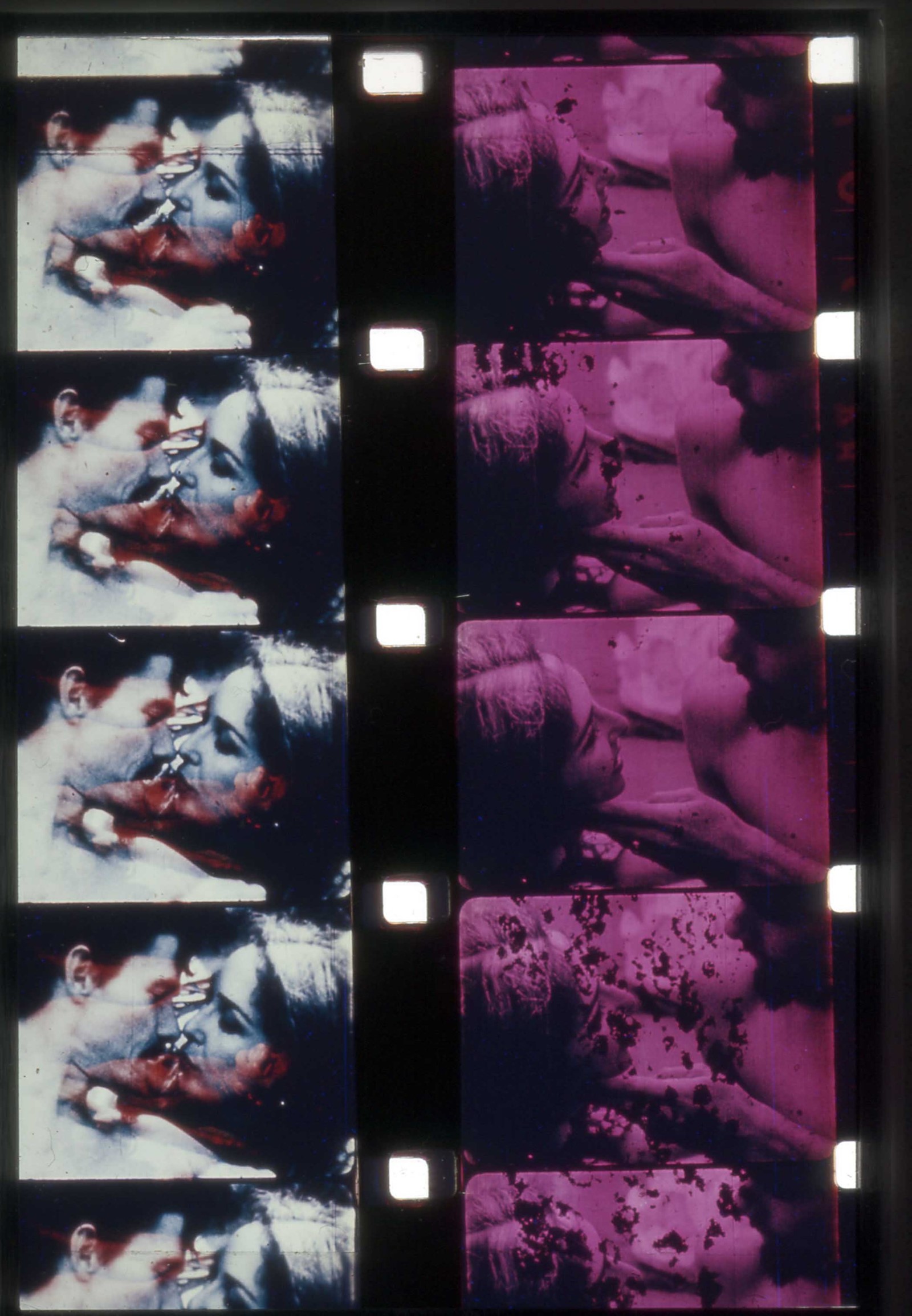
Lauren Elkin, Writer and Author of No. 91/92: Notes on a Parisian Commute
“At some point over the course of my reading in feminist art I came across Interior Scroll, which is such a legendary piece – I mean, the woman is pulling a scroll from her vagina and reading this insightful, poetic feminist manifesto from it! In a way it’s the most exemplary piece of feminist performance art. But I love the content of the manifesto – about how women’s art is unseeable in a patriarchal context, because of its ‘hand-touch sensibility,’ its ‘painterly mess,’ its ‘diaristic indulgence.’ In my next book, Art Monsters, these concepts form the basis of what I’m arguing is a feminist aesthetics of monstrosity. Carolee Schneemann, like some of the other artists and writers I’m looking at, used her body to challenge the modes in which women are expected to work in order to be accepted by the establishment. I have felt this a great deal in my own work – the push to make work they’ll approve of in order to succeed as a writer. It’s only in recent years that I’ve felt empowered to push back against that, and Carolee’s work is a big part of why.
“There’s an unfortunate tendency, still, to equate feminist art with humourlessness, or self-absorption, and this simply isn’t the case where Carolee’s is concerned. From her earliest kinetic paintings to performance works like Meat Joy or Snows to installations zines to films (Fuses! Revolutionary! Infinity Kisses! who else has made out with a cat on-screen?) and essays, she is an artist who was interested not only in making feminist arguments about valuing women and women’s bodies but in freedom, ethics, pacifism, community, illness, pleasure, and joy, and she approached these subjects with a blend of hilarity and unwavering seriousness.
“I think above all else, Carolee was an artist of the body, fighting for the female body to be legible in its own right, to figure outside of the categories of male fantasy or abject slab of meat, which are two of the main modes in which the female body signified, then as now.”
Carolee Schneemann: Body Politics is on show at Barbican in London until January 8 2023.
